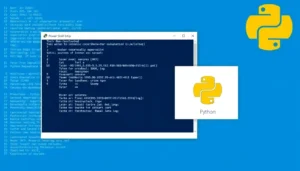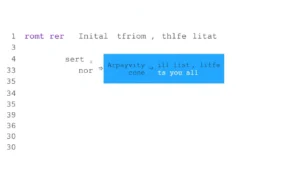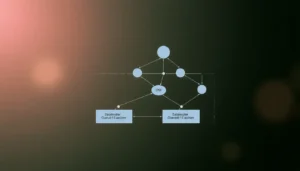Auto Stocks GST Cut: M&M, Tata Motors, Escorts Kubota Jump Up to 9% on Tax Reduction
- THE MAG POST

- Sep 4
- 4 min read

The Indian automobile market is buzzing with activity following a significant GST rate adjustment that favors smaller vehicles. On September 4th, shares of major players like Mahindra & Mahindra, Tata Motors, and Escorts Kubota surged by as much as 9% in early trading. This sharp rise is a direct response to the GST Council's decision to lower the tax rate on compact cars, a move that has injected considerable optimism into the sector. The Nifty Auto Index climbed over 3%, reaching an 11-month peak, signaling strong investor confidence and a positive outlook for the industry's immediate future. This strategic reduction in GST is expected to make a range of popular car models more affordable for consumers.
GST Rate Reduction Ignites Auto Sector Surge
The Indian automobile sector experienced a significant upswing on September 4th, following the Goods and Services Tax (GST) Council's decision to slash tax rates for smaller vehicles. This strategic move by the council has injected renewed investor confidence, propelling shares of major auto manufacturers into a strong upward trajectory. Companies like Mahindra & Mahindra (M&M), Tata Motors, Escorts Kubota, and Maruti Suzuki witnessed impressive gains, with some touching double-digit percentage increases in early trading. The Nifty Auto Index, a key barometer for the sector, surged by over 3%, reaching an 11-month high of 26,612.20 points, underscoring the positive market sentiment.
Navigating the New GST Landscape for Vehicles
The recent GST Council meeting, held on September 3rd, introduced a pivotal change: reducing the GST on vehicles with engines up to 1200cc and a length not exceeding 4000mm to 18%, down from the previous 28%. This adjustment specifically benefits petrol, LPG, and CNG cars within these specifications, as well as diesel cars up to 1500cc with a length of 4000mm. This recalibration is anticipated to lead to a notable decrease in the ex-showroom prices of popular models such as the Maruti Swift, Hyundai i10, Tata Punch, and compact SUVs like the Brezza and Venue, potentially by 5-7%. Even small hybrid vehicles are expected to benefit from these tax incentives.
Shifting Tax Tiers: The Impact on Larger and Premium Vehicles
In contrast to the relief provided to smaller vehicles, the GST Council has placed larger and more premium vehicles into a higher tax bracket. Vehicles exceeding 1200cc for petrol engines or 1500cc for diesel engines, and those longer than four meters, will now face a 40% GST rate, an increase from the previous 28%. This decision deviates from industry expectations, as many companies had hoped for tax incentives for hybrid vehicles, similar to those offered for pure electric vehicles (EVs). The government's continued emphasis on promoting EVs is evident in the unchanged 5% GST rate for these eco-friendly cars.
Impact of Cess Removal on Premium Segments
Despite the increased GST rate for larger vehicles, a nuanced benefit emerges from the removal of the additional cess. Previously, a cess ranging from 1% to 22% was applied on top of the 28% GST for these vehicles. While the overall tax burden remains high due to the 40% GST, the elimination of this additional cess might offer a marginal reduction in costs for certain categories of premium and luxury cars. However, the net effect is that the tax burden on these vehicles continues to be substantial.
Two-Wheeler Segment and Agricultural Machinery Adjustments
The two-wheeler segment also sees significant adjustments. Motorcycles with engine capacities exceeding 350cc will now be subject to a 40% GST. Conversely, motorcycles with engines below 350cc, along with three-wheeled vehicles and ambulances, will benefit from the reduced 18% GST rate. A particularly welcome change for the agricultural sector is the reduction in GST on tractors to 5%, a move expected to provide considerable relief to farmers and boost agricultural machinery sales.
Market Reaction and Sector Performance
The stock market immediately reflected the impact of these GST changes. Mahindra & Mahindra (M&M) shares surged approximately 7% to reach ₹3,505. Escorts Kubota experienced a remarkable nearly 9% jump in early trading. Other major players like Eicher Motors, Tata Motors, and Maruti Suzuki also saw their stock prices climb by over 2%. Even TVS Motors and Hero MotoCorp registered gains of around 1%, showcasing a broad-based positive reaction across the automotive industry. This robust performance highlights the market's optimism regarding the potential sales boost and improved affordability for a significant segment of Indian consumers.
Conclusion: A Calculated Move for the Auto Industry
The GST Council's recent decisions represent a calculated strategy to stimulate demand in the Indian automotive market, particularly for smaller, more accessible vehicles. By reducing the tax burden on these segments, the government aims to enhance affordability and drive sales, thereby boosting the overall automotive ecosystem. While larger and premium vehicles face increased taxation, the adjustments in the two-wheeler and agricultural machinery segments aim to provide targeted support. The market's immediate positive response indicates a strong belief in the sector's potential to leverage these changes for growth.






















































Comments